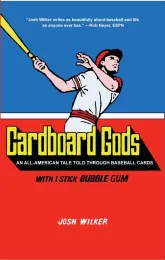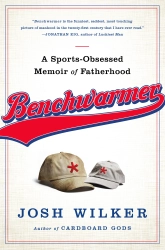Jerry Terrell made the Topps rookie all-star team in 1973, then began experimenting the following year with switch-hitting, taking up batting from the left side. This card provides some rare evidence of that brief, doomed experiment, both in the photograph on the front and in the listing on the back (“Bats: Both”). By midseason, a prolonged slump prompted Terrell to junk switch-hitting and go back to the way he was before, a right-handed hitter.
That season, Terrell’s chances at the plate dwindled, but he made himself useful by playing several positions and appearing more times as a pinch-runner than anyone ever had before in a major league season. Unfortunately, in terms of his legacy, if such a thing as the record for most pinch-running appearances in a single season can be considered a legacy, 1974 was to pinch-running what 1998 was to home runs, and in 1974 both Larry Milbourne (Astros) and the Lord of All Pinch-Runners, Herb Washington (A’s), surpassed Terrell on the all-time single-season list. A look at Brandon Isleib’s interesting 2007 Baseball Prospectus article on the history of pinch-running suggests that the cardboard gods era (which dawned in 1974 and which is an absurdly demarcated span of time in that it derives solely from the intersection of baseball and my childhood) was the golden age of pinch-running. The plethora of 1970s fast guys on the list of all-time appearances as a pinch-runner is of course propped up to a large extent by Oakland’s attempt to elevate pinch-running to a level of importance in the game equal to relief pitching (the latter an element of the game that the A’s also leaned on with uncommon gusto but that, in contrast to pinch-running, actually led both to wins and to changing how the game was played). But the presence of non-A’s on the all-time pinch-running list—Terrell, Willie Wilson, Miguel Dilone, Mike Jorgenson, Ted Martinez—suggests that managers in the 1970s were more willing to yank a slow guy for a faster guy to try to eke out a run.
Runs were a little tougher to come by back in those days, and I’m glad that lately things seem to be trending back closer toward the average runs-scored-per-game marks of the 1970s. It’s better when a guy like Jerry Terrell can make a difference, and it stands to reason that he has a better chance to do that during a tight 3-2 game than in an 11-6 slugfest. He can fill in defensively all over the diamond, he can pinch run, and he can—I have no evidence of this but I am as sure of it as I am of my name—lay down a good bunt. He had a mind trained on the little things that could possibly provide the winning edge in a game, as shown by his later career as an advance scout (he helped the Royals win the 1985 World Series in this capacity) and by a rule-breaking incident that occurred during his lone season of switch-hitting, 1974. From a 2002 Baseball Digest article by Rich Marazzi:
Umpires are also given the authority to be mind-readers to determine intent via 4.06(a) that stipulates a batter cannot call “Time” or employ any other word or phrase or commit any act while the ball is alive and in play for the obvious purpose of trying to make the pitcher commit a balk.
Minnesota’s Jerry Terrell snubbed his nose at the rule and beat the system on the night of May 29, 1974, when the Twins hooked up with the Red Sox in Boston.
The score was tied 4-4 in the top of the 13th inning. Minnesota had runners at the corners and one out with Terrell at the plate. Red Sox pitcher Diego Segui became confused while in his delivery and balked when he noticed Terrell reaching down in the batter’s box for some dirt. Terrell had learned the trick when he played amateur baseball and admitted so. Because of the balk, both runners advanced one base, giving the Twins a 5-4 victory.
Although the thinking among many umpires is that big league pitchers should know enough not to stop their windups and balk in such situations, Terrell’s deceitful act created an unfair advantage and the balk should have been nullified. The umps could have also ejected Jerry from the game.
Terrell never tried such a thing again, as far as I can tell, possibly because of a change that occurred in his life the year this card came out. “The Lord has been in control of my life since 1975,” Terrell said in a 2002 “where are they now” article. A few years later, in 1980, Terrell’s religious devotion was cited as the reason for his decision to cast the one dissenting vote in the leaguewide ballot proposing a player strike. (The other players did not resent Terrell’s decision, respecting the sincerity of Terrell’s beliefs, according to an entry on Terrell in the always excellent Baseball Biography Project series.)
By the time the players acted on their vote and went on strike, in 1981, Terrell had been released from his last major league team, the Royals. His biggest moment with the Royals had been a testament to his greatest skills—his versatility and his willingness to do whatever the team needed: During a blowout loss in 1979, he pitched the ninth inning and retired the Yankees on three pitches (grabbing what has to be a share of the all-time record for fewest pitches thrown in a complete inning). The Royals fans gave him an ovation for that effort, and in the bottom of the inning, when he drove in a meaningless run, they gave him another ovation.
We’re all mathematically eliminated. The game is already lost. Why not cheer utility man?







You must be logged in to post a comment.